It’s the .35 Whelen (not “wailin'”), but with a name like that, I had to have a little fun. I also considered “Win Some, Lose Some” for the title of this blog, but I’ll get to that in a minute. What this blog is all about is the beginning work in finding a reduced velocity load for my .35 Whelen Ruger No. 1.
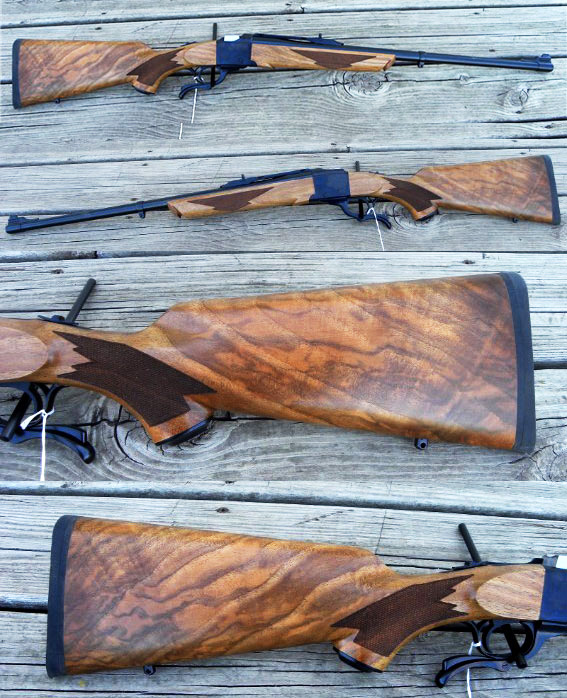
My .35 Whelen is the one you see in the photos above. I have a thing, you see, for Ruger No. 1 rifles. The first rifle I ever bought was a Ruger No. 1 in .30 06 when I was in the Army back in the ‘70s. I initially thought I’d wear out the barrel on my .30 06 and have it recut to .35 Whelen, but that ain’t gonna happen (I’ll never shoot that rifle enough). I have shot it a lot, though. An infantry division of jackrabbits in west Texas met their maker on account of me and my .30 06 No. 1.
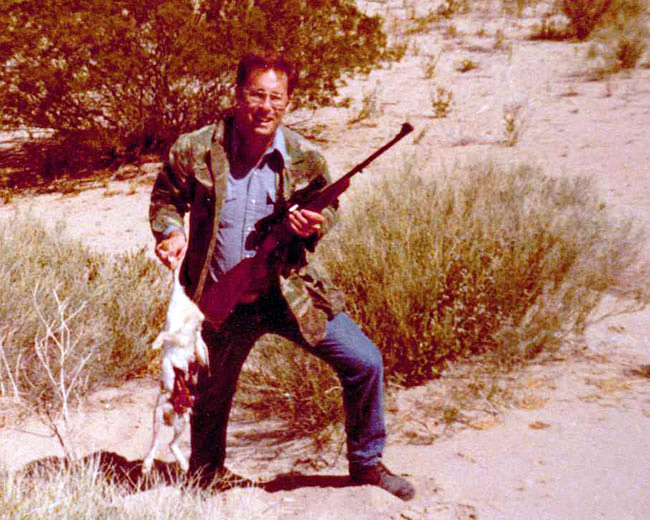
Okay, back to the .35 Whelen: The concept of a big bore .30 06 stuck in my mind. I’d wanted a Whelen ever since I read about the cartridge. It was created by Townsend Whelen in 1922 (there’s some disagreement about whether it was Whelen or a guy he worked with, but there’s disagreement about everything on the Internet, and Townsend Whelen is the story I’m going with). Old Colonel Whelen ran a .30 06 cartridge case over a .358 expander, plunked in a .358-caliber bullet, and voila, he had created the .35 Whelen.
The .35 Whelen was strictly a wildcat from 1922 to 1988; in 1988 Remington chambered their 700 Classic rifle for it (my good buddy Jason has one and he recently took a nice buck with it). Then Ruger manufactured a limited run of No. 1 rifles in .35 Whelen maybe 5 or 6 years ago (I got mine from that run). Most of these rifles had very plain wood (both the Remingtons and the Rugers); when I saw the one featured in this blog on GunBroker, I jumped on it. The gun looks even better in person that it does in the photos (and it looks great in the photos). My mantra for many years has been that you just can’t go wrong with a Ruger No. 1 and fancy walnut. I believe these to be some of the classiest rifles ever made.
Why a reduced load? Hey, why not? I’ve got other thumpers, and if I ever hunt dinosaur, I can take my .458 Win Mag. I thought finding a way to make the Whelen work with less energetic loads would be fun. Factory-level loads are tough at both ends, and I want to have fun with this rifle. Folks say the .35 Whelen is as good a game-dropper as a .375 H&H. That may be, but it’s irrelevant to me, and besides, those kinds of energy levels come with big recoil. Finding a load that makes a thumper less of a thumper is my idea of fun. I just think the cartridge looks cool, too.
So I’ve had the Whelen a few years now, but until recently, I had never fired it. Then, for reasons I won’t go into, I no longer have a .357 Magnum handgun but I have a couple thousand 200-grain cast .357 Mag bullets. Hey, I thought…let’s see if they’ll work in the .35 Whelen. I looked online and found that other guys are doing it, my 200-grain bullets are sized at .358, and I thought it ought to work.
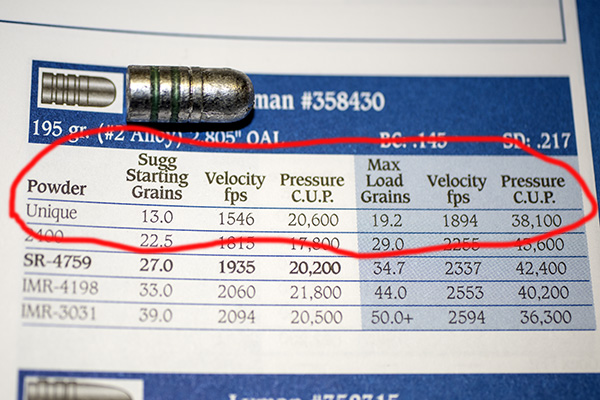
I looked in the Lyman cast bullet book and I think the bullets I bought are the very same 200-grain Lyman bullet their cast bullet manual shows for the .35 Whelen (the profile is exactly the same). Whoa, this just might work, and it would give me something to use those big pills in.
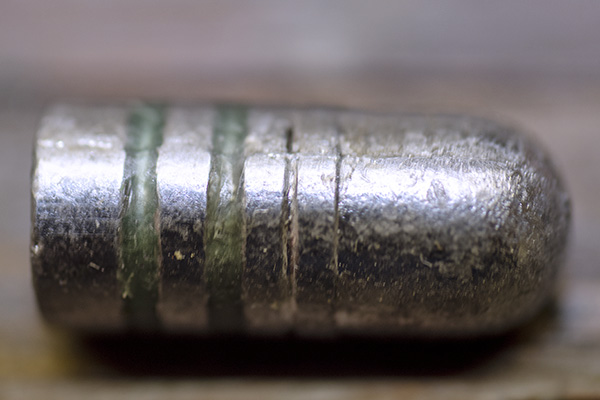
I actually have .35 Whelen brass, but I wanted to make some the old-fashioned way like Townsend Whelen did. I ran 20 new .30 06 cases through the .35 Whelen sizing die to open the case mouths to .35 (from .308), I flared the mouths slightly with the Lee case mouth flaring tool (that’s so the cast bullets will start into the case mouth without shaving lead), and then the brass cases went into the tumbler. They came out looking good.
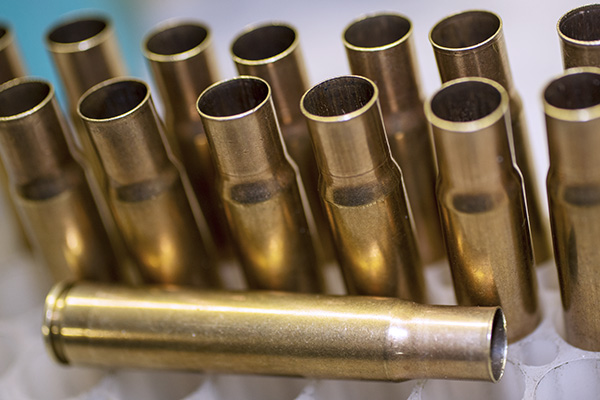
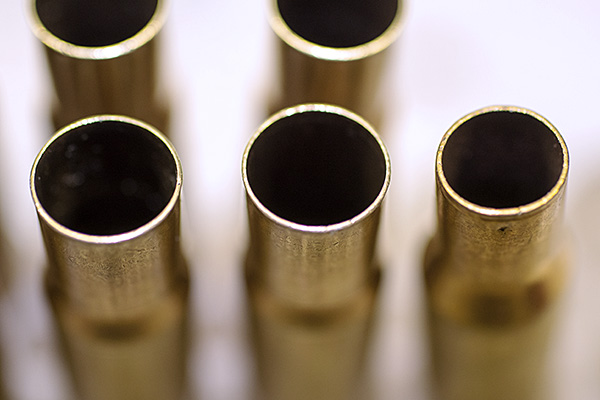
I selected Unique as the propellant for this first load because I have some on hand, and because it shows the lowest velocities in the Lyman manual. I went with 15.0 grains as a starting point. My 200-grain .357 magnum cast bullets leaded the bore a little bit in my .357 Magnum Blackhawk revolver, so I was mildly concerned that they would lead the bore in my Ruger No. 1. Hold that thought, because we’re going to return to it in a second.
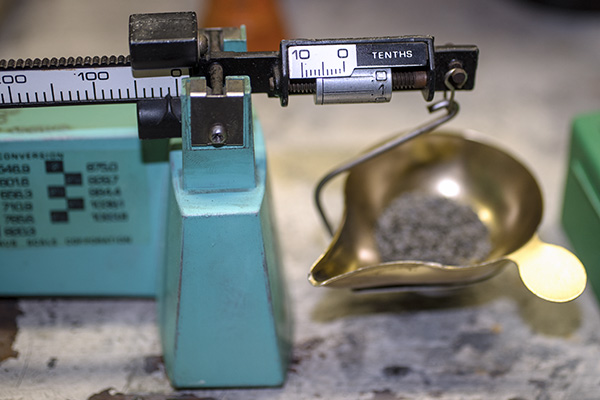

My .35 Whelen cartridges looked good, and they chambered with no issues in the No. 1. I was eager to get to the range to see how they would group.
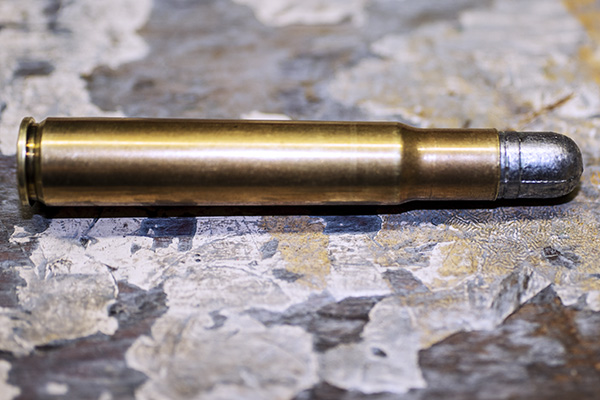
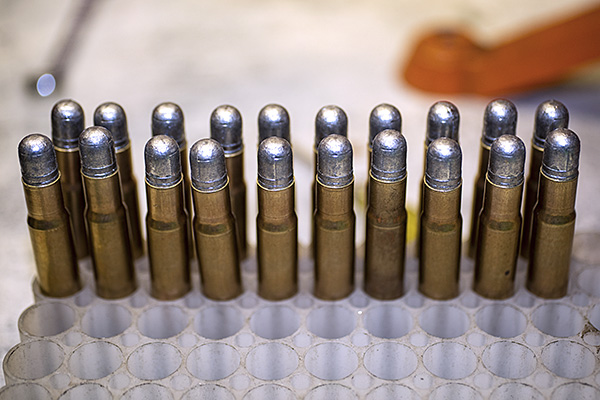
So how did it work? Well, that brings us to the “lose some” portion of the tentative title I mentioned at the start of this blog. You know, as in “Win Some, Lose Some,” although I don’t think any No. 1 with wood like the one you see here could be filed in the “lose some” column.
Bottom line? The cast bullet load didn’t perform well at all. The bullets didn’t tumble in flight (as would have been evidenced by their keyholing through the target), but they didn’t group worth a damn, either. I’m talking 12-inch groups at 50 yards. Hell, on a mediocre day I can shooter smaller groups at a hundred yards with a handgun. A quick look at the bore revealed the culprit: Leading. Lots and lots of leading.
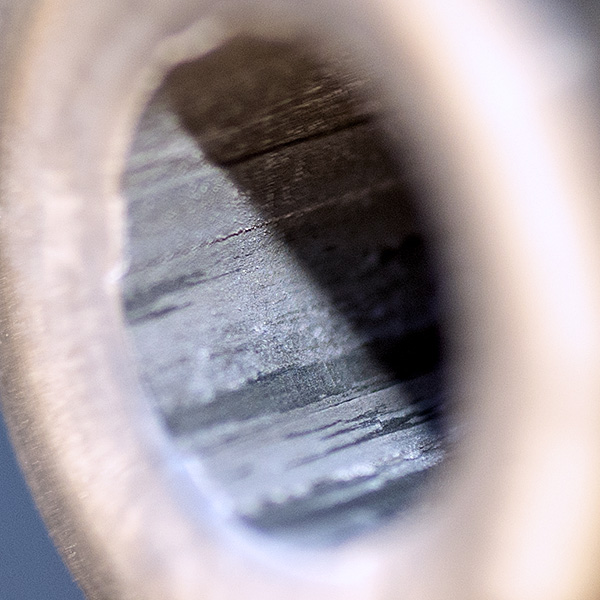
Okay, it’s knowledge gained, and that’s not a bad thing. These handgun bullets won’t work in my No. 1. But there are cast bullets out there made specifically for rifles, and I knew where to go to get some. I like the cast bullets made by Montana Bullet Works. I called them when I got home, I had a nice conversation with Bruce (the owner), and a hundred of his bullets are on their way to me now. Bruce’s bullets are from an RCBS mold, they have a gas check, they’re hardened to 22 BHN, and they’re heat treated (to prevent breakup when hunting). Everything I’ve read about these bullets on the Internet indicates they are great, and I’ve had good experiences with Montana Bullet Works when using their bullets in a different big bore rifle. I’ll update you with a range report when I try them.
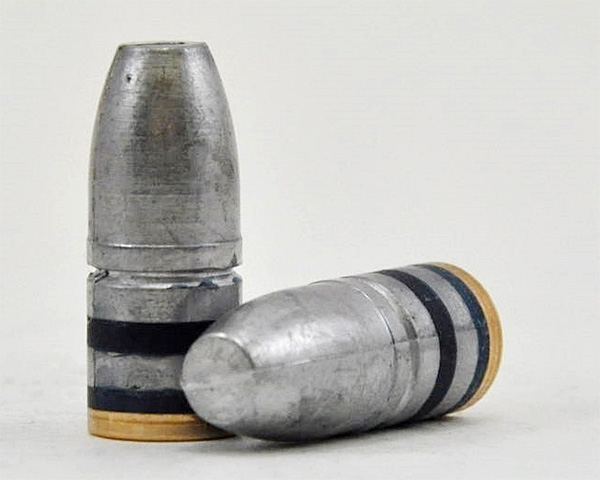
In the meantime (while I’m waiting for the Montana Bullet Works bullets), I explored the Internet and my loading manuals for more information on a reduced .35 Whelen load. I didn’t do well with the 200-grain cast .357 Mag bullets but in researching this more, I found that others have had decent results using jacketed .357 Mag bullets, and there are loads published for this in the Lyman manual. The .35 Whelen rifle bullet diameter is listed at .358 and the jacketed pistol bullets are listed at .357 (we’re talking inches here, folks), but guys on the Internet are saying they get good results with the pistol bullets. So I loaded 20 and made a quick run to the range.
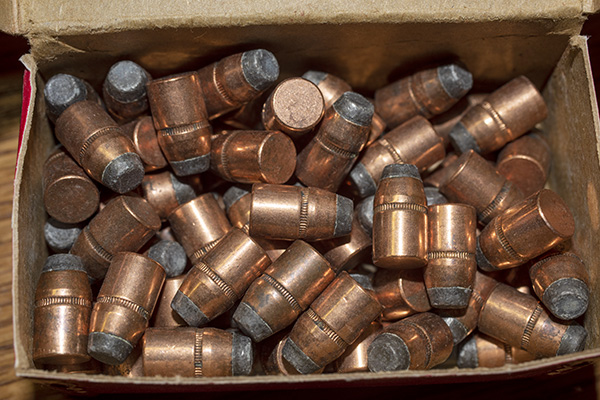
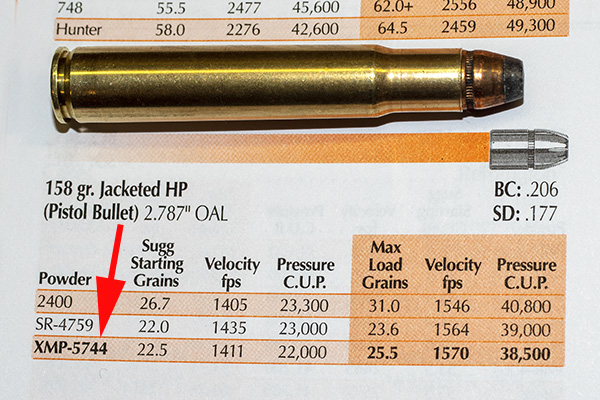
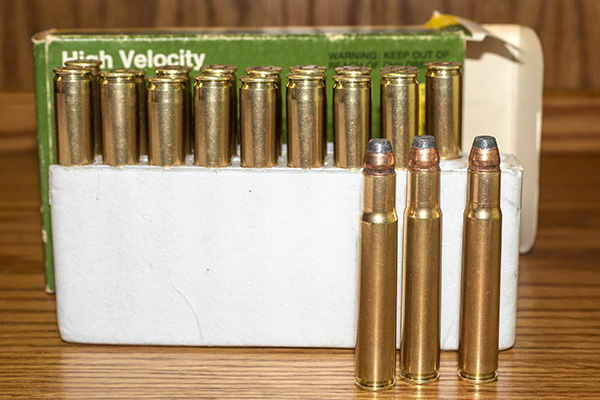
I loaded at 24.0 grains of 5744 because I have that powder on hand and I didn’t want to dip into my stash of discontinued 4759. While I was loading these, I was a little leery about shooting .357-inch diameter bullets in a .358-inch bore. About 45 years ago in another life I tried loading .45 ACP bullets in a .458 Win Mag (I know, I was young and dumb). The difference there was too much (the pistol bullets were .451 inch and the bore diameter for a .458 Win Mag is .458). Those rounds fired okay, but accuracy was horrible. The bullet was a whopping 0.007 smaller than the bore. Here, with the .35 Whelen, I’m 0.001 smaller. Maybe it would work, I thought.
I arrived at the range in the late afternoon and set up a target at 50 yards. At the West End Gun Club, the rifle range points about 20-degrees north of due west, and what that means is that late afternoon shooting involves shooting into the sun (the sun is off to the left about 20 degrees). Everything I’ve read about the effects of lighting on bullet point of impact says that the point of impact moves in the opposite direction that light emanates from, but my experience has always been exactly the opposite. If the light is coming from the left, my point of impact is to the left, and that’s what I experienced with the Whelen.
My Ruger has a brass bead front sight (which I think is the worst kind of front sight), and it had a decided flare on the left side from the sinking sun. Sure enough, my first group was sharply offset to the left. Tight, but to the left. I shifted the sight over to the right, and my guesstimate put the point of impact dead even with the centerline of the target. I fired a 3-shot group, moved the front down a hair, and then fired a 5-shot group. All were gratifying small, given that I was shooting almost into the sun by then and using iron sights (well, brass and iron, but you know what I mean).
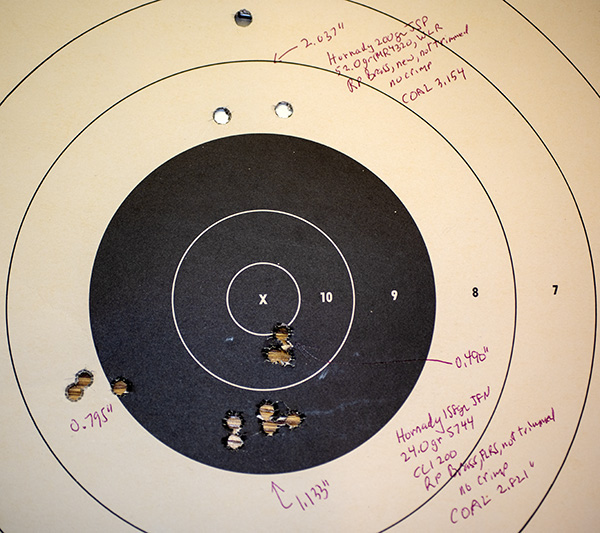
This is looking good. I am very satisfied with the accuracy I’m getting with the reduced velocity jacketed pistol bullet groups. They’re maybe about 1500 feet per second, and that just feels right.
Then, just for giggles, I fired another 3-shot group with “real” .35 Whelen ammo, loaded with the 200-grain Hornady jacketed softpoint bullet and 52.0 grains of IMR 4320 ammo. That’s at the low end of the big bore loads in the Hornady manual, recoil was substantially higher, and as expected, the group was quite a bit higher (I had the rear sight all the way up for the reduced velocity loads). It wasn’t as tight as the pistol bullet reduced loads, but it’s the first load I tried in the big boy .35 Whelen load region. It was late in the afternoon and the sun was, by now, nearly directly even with my line of sight. I have a million excuses, folks.
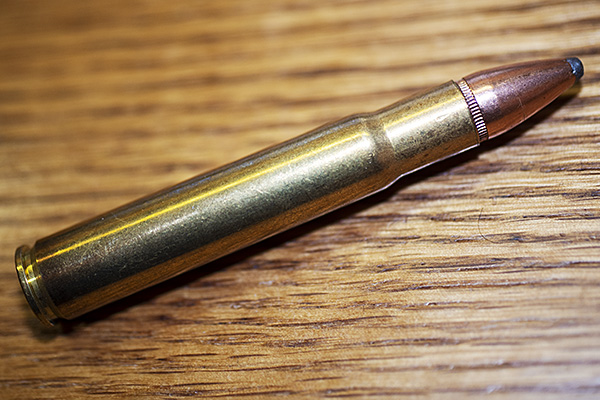
Overall, this is good stuff. At least it is to me. I’m sure there’s a clown or two on Facebook who shoots quarter-inch groups offhand in the rain at 500 yards with his .35 Whelen (it’s always a guy, never a gal, making those insane claims), but for a geezer like me shooting iron sights, this ain’t bad for the second time I’ve had this rifle on the range. You can bet there will be more.
You might be wondering: Why not just go with a full-bore, factory-equivalent load? I’m way ahead of you there. I’ve got a hundred rounds of factory-level .35 Whelen loads ready to go with 200-grain and 250-grain jacketed Hornady bullets (well, now it’s 97, as three of them went through that target you see above). Me? I’m on a quest to develop a decent reduced load for this rifle and I am making good progress. I can shoot the full bore stuff later; for now, the reduced load quest continues. I’ve got good results with the jacketed 158-grain Hornady pistol bullets; when the Montana 200-grain cast bullets arrive, I’ll let you know how they work.
Help us keep these stories coming: Please click on the popup ads!
More Tales of the Gun and good reloading info are here!
Do you ride? Check out some of our epic motorcycle trips!
The ultimate Roscoe? You bet!
Never miss a blog! Subscribe for free!


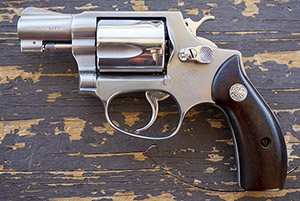
Dang it!!! I’ve been lusting for a .35 Whelen & another Ruger 1..You just pushed me over the edge.😄 Good write up!!! BTW .. I agree..Montana Bullet Works..the very best.👍👍👍👍
Good luck on the quest for the No. 1. I imagine they are getting hard to find.
I have a T/C Encore 35 Whelen since it is legal for primitive firearm season here in MS. I’ve thought about working up some reduced loads myself, but I’m more interested in something in the 35Rem range. I have some 35Rem bullets in my stash, but I haven’t gotten around to it yet. I’m currently running 225gr SGKs over RL15 at 2600fps.
Thanks for your comment, Roger.
Although not a reduced load I have loaded for three friends here in Mississippi plus myself for their legal cartridge guns to use during primitive weapon season. All love the Whelen. 56 grains of Varget over at 225gr Hawk RT with the .035 inch jacket. Superb load for both Deer and Feral hogs.